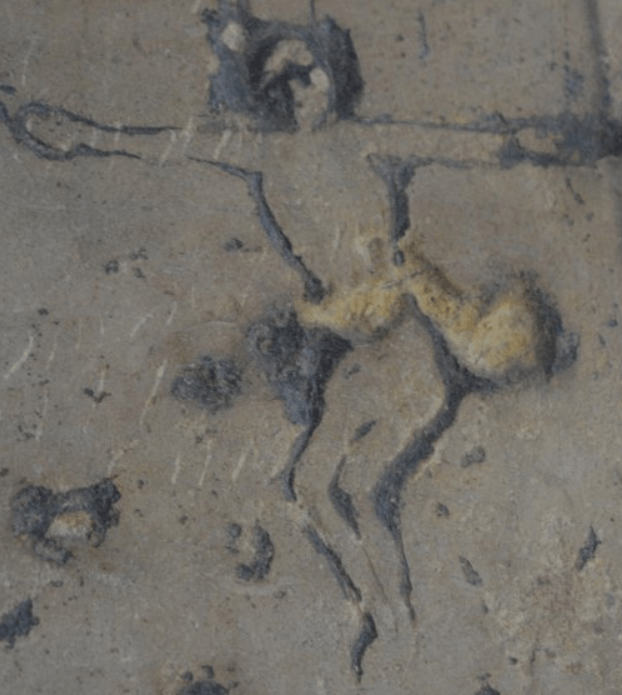Long before the Victorian era, prisoners, suspected criminals and those who had offended the local dignitaries in Lincoln, were held at Lincoln Castle. Contrary to the popular image of castles, these were cold, draughty and dingy places and its unsurprising that in later centuries, aristocrats traded these for palaces. However, Lincoln retained its castle right through 19th century and repurposed it as a place of penal servitude.
From the 1300s onwards, the dungeon was in use for incorrigible miscreants.
Once such case is that of Agatha Lovell, a 14th century servant. She bribed her gaolers to escape the noose after killing her master Sir William Cantilupe with help from 15 other members of the household. The 17th century saw the trial and incarceration of the Belvoir Witches, three women accused of causing the deaths of noble infants, 5 years after the supposed deeds took place.
In 1787, a few years after a visit from the horrified philanthropist John Howard, the prisoners were moved from a dank dungeon hole to a slightly less dank Gaol. Conditions slightly improved, and an onsite courthouse, infirmary and washroom were also added. The courthouse is still in use today, despite the other structures falling out of use and being torn down by 1878.
In 1848 a second wing was created to hold those on remand, including male, female and infant prisoners. The debtors remained in the Georgian structure, which had been of a slightly superior design due to additional comforts like fresh air and less likely to be shackled.
The prison aside from housing inmates, played host to both public and private executions, many of whom were laid to rest in the surviving “Lucy Tower” gardens. Surprisingly, some of these inmates’ headstones still survive to this day; a rare occurrence in an age when the cost of having stone carved, could have exceeded that of a family’s monthly wage.
Originally, the hangings at Lincoln Castle took place on top of Cobb Hall to allow for the thousands of spectators that were expected. Indeed, in one case, 15,000 people were reported to have attended. In 1868 when public hangings were outlawed the gallows were relocated to Lucy Tower.
Some of the most notable executions were:
- The 1859 dual hanging of William Pickett and Henry Carey, who were convicted of the murder of William Stevenson. They murdered him for the three or four pounds that he held in his pocket. Interestingly, this investigation used the comparison of footprints as part of the identification and conviction process.
- William Frederick Horry, known as Fred Horry, was in 1872 the first prisoner to be hanged using William Marwood’s “long drop” method. He was sentenced to death for murdering his wife after she left the marital home, taking their children and had refused to return. The efficacy of Marwood’s long drop hanging, resulted in him being appointed Hangman by the Sheriffs of London & Middlesex .

- Priscilla Biggadike (1868) the first woman hanged after public executions were made illegal. Sentenced to death for poisoning her husband with arsenic. Priscilla maintained her innocence all the way to the gallows, and a year after her death her lodger confessed to the murder.

In 2011 Lincoln Castle created a musical about Priscilla’s life and supposed crime.
- William Clarke (1877) the original Slenderman, on account of his thinness, on the morning of his execution penned the lines –
When my last breath commeth,
Fraught with Strife and Pain,
When my dust returneth
To dust again,
On Thy truth relying,
Through that mortal strife,
Jesus take me dying
To immortal life. Amen.
Those prisoners not sentenced to death were sent on to other prisons for the length of their sentences. This Victorian building was used only to hold inmates either until execution or sentencing. Still, this could be six months or more depending on which court the inmates were to be tried at, and the entirety of this “remand” was in strict separation. Their only outlet being religion and manual labour. This resulted in some very detailed carvings in the walls created by the inmates, and many acts of rebellion.

After 1878, the lack of prisoners and expense of running a large facility ensured the building’s final closure and so the county prison, also in Lincoln, took over management of remanded inmates.
During the Second World War one of the towers of the castle was utilised by young boys from the Civil Defence Service, to observe the night sky in preparation for bombing attacks and report all noted incidents to the Nottingham Observer Corps.
In more recent times, the castle and prison have opened to public visits, has showcased various displays from military to artistic and part of the prison was even used to film Downton Abbey. The castle also holds one of England’s only four remaining copies of the Magna Carter.